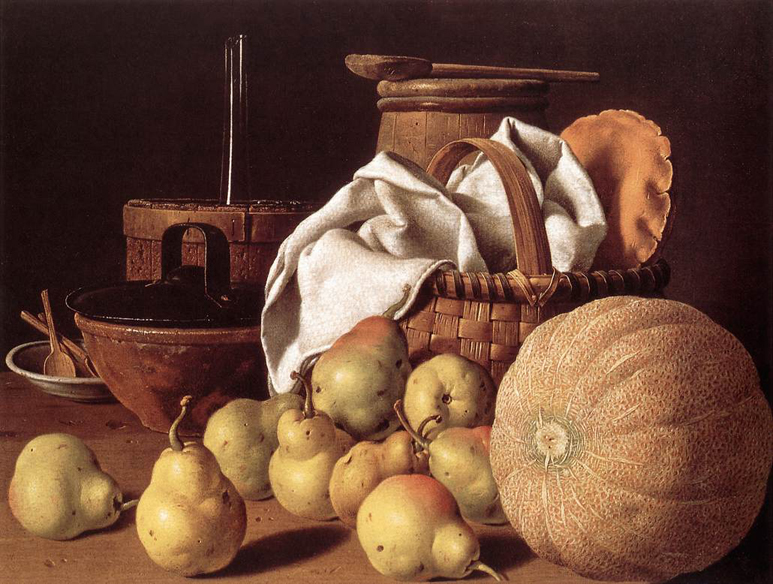Agriculture in Art
Luis Melendez
 Still Life with Melon and Pears, 1770
Still Life with Melon and Pears, 1770
A still life is a work of art showing inanimate subject matter, typically commonplace objects which may be either natural (food, plants and natural substances like rocks) or man-made (drinking glasses, hot dogs and so on) in an artificial setting. Popular in Western art since the 17th century, still life paintings give the artist more leeway in the arrangement of design elements within a composition than do paintings of other types of subjects such as landscape or portraiture.
Still life paintings often adorn the walls of ancient Egyptian tombs. It was believed that food objects and other items depicted there would, in the afterlife, become real and available for use by the deceased.
Luis Meléndez was a Spanish still life painter. Although he received little acclaim during his lifetime and died in poverty, Meléndez is recognized today as the greatest Spanish still-life painter of the eighteenth century. His mastery of composition and light, and his remarkable ability to convey the volume and texture of individual objects allowed him to transform the most mundane of kitchen fare into powerful images. He studied light effects, texture and the color of fruits and vegetables as well as the earthenware, glass and copper pots beside which the fruit is displayed. He painted the ordinary stuff of every day life. He used a low vantage point and close-up view of objects placed on a tabletop, encouraging the spectator to study the objects for themselves. This exploration was in keeping with the growing spirit of the Enlightenment and the king of Spain's interest in natural history.
Meléndez seems to have spent more time lighting his scenes than preparing pigments for his palette. He loved painting reflections on the surfaces, edges, and rims of lemons, copper pots, ceramic bowls, plums, and melons. He described his works as "an amusing cabinet with all types of foodstuffs that the Spanish climate produces." (Source: Wikipedia, the free encyclopedia)
Discussion and Activities
- Find examples in this painting of the reflections on surfaces, edges and rims that Melendez loved to paint.
- How would still life paintings be more useful for studying nature than painting a landscape?
- What does it mean that Melendez used a low vantage point in his paintings?
- What "foodstuffs" would you gather to create a cabinet of foods that the Oklahoma climate produces?
- Write a paragraph describing this painting in as much detail as possible.
